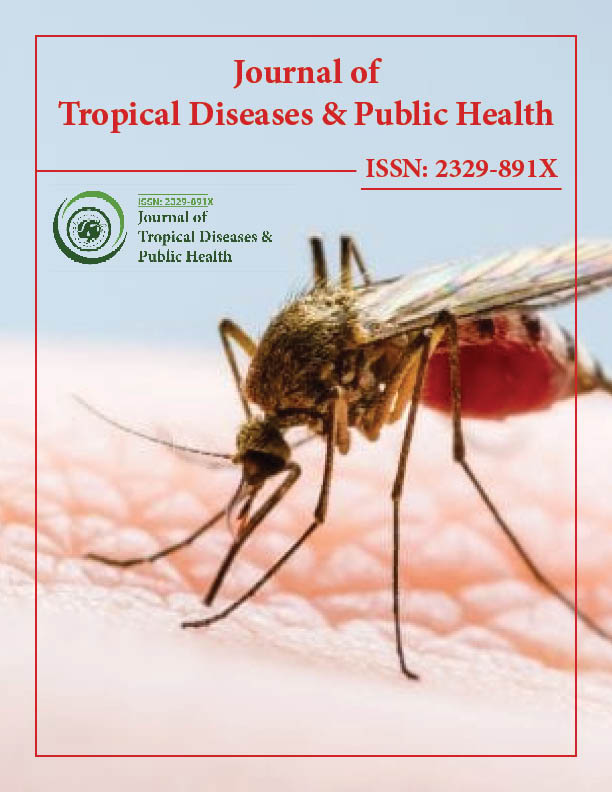Indexed In
- Open J Gate
- Academic Keys
- ResearchBible
- China National Knowledge Infrastructure (CNKI)
- Centre for Agriculture and Biosciences International (CABI)
- RefSeek
- Hamdard University
- EBSCO A-Z
- OCLC- WorldCat
- CABI full text
- Publons
- Geneva Foundation for Medical Education and Research
- Google Scholar
Useful Links
Share This Page
Journal Flyer

Open Access Journals
- Agri and Aquaculture
- Biochemistry
- Bioinformatics & Systems Biology
- Business & Management
- Chemistry
- Clinical Sciences
- Engineering
- Food & Nutrition
- General Science
- Genetics & Molecular Biology
- Immunology & Microbiology
- Medical Sciences
- Neuroscience & Psychology
- Nursing & Health Care
- Pharmaceutical Sciences
Perspective - (2023) Volume 11, Issue 5
Exploring Potential Applications of Vector-Based Virus Transmission of Fluorescent Protein and Glycoprotein from the Nipah Virus
Naavi Jaink*Received: 02-Oct-2023, Manuscript No. JTD-23-23734; Editor assigned: 06-Oct-2023, Pre QC No. JTD-23-23734 (PQ); Reviewed: 20-Oct-2023, QC No. JTD-23-23734; Revised: 27-Oct-2023, Manuscript No. JTD-23-23734 (R); Published: 03-Nov-2023, DOI: 10.35241/2329-891X. 23.11.409
Description
Nipah virus is a zoonotic virus that has a major impact on human health, with its potential to cause neurological and respiratory symptoms in infected individuals. To gain an understanding of the structure and behavior of Nipah virus, researchers have turned to Vesicular Stomatitis Virus (VSV). VSV is closely related to Nipah virus, sharing similar biological characteristics. It is also considered an ideal candidate for providing insights into the structural and functional features of proteins found in Nipah virus. In particular, VSV exhibits a unique ability to incorporate foreign proteins into its genome.
By using VSV as a vector for expressing this protein, researchers are able to observe it more easily within cell cultures and gain insights into its function within the infectious agent itself. Using this technique, scientists have been able to better understand not only the structure but also how different forms of Nipah glycoproteins interact with each other or with host cells within infected individuals. This information has proven invaluable in developing effective treatments for patients suffering from diseases caused by this zoonotic pathogen.
Vesicular Stomatitis Virus (VSV) is a powerful tool for introducing proteins such as the Nipah virus glycoprotein and fluorescent proteins into cells. This method has been used in both in vitro and ex vivo environments, allowing for better understanding of the properties of these proteins. The ability to accurately introduce these proteins into cells without causing any adverse effects makes VSV an attractive option for research studies. In vitro studies using VSV to introduce Nipah virus glycoprotein have shown in results. By introducing the glycoprotein into cell cultures, researchers have been able to better understand its properties. In addition, the protein was successfully identified using immunofluorescence staining, demonstrating that VSV can accurately deliver proteins efficiently. Moreover, this technique also allowed researchers to analyse the protein's structure and function more precisely.
Ex vivo studies are equally beneficial when it comes to understanding how Nipah virus glycoprotein behaves in living organisms. Through these experiments, it has become apparent that VSV can be used to insert fluorescent proteins into cells without causing any damage or negative side effects. This has enabled researchers to track the location of certain proteins within an organism while also taking advantage of their fluorescence capabilities for further study or analysis. Vesicular stomatitis virus (VSV) is a well-established vector for expressing foreign proteins in mammalian cell culture, and is increasingly being used for molecular studies of Nipah virus (NiV).
Nipah virus is a zoonotic pathogen that has been identified as one of the top emerging infectious diseases. This virus can cause severe disease in humans, often resulting in death. Recent advances in biotechnology have made it possible to develop vaccines and treatments against Nipah virus using recombinant technologies. One promising approach is the use of Vesicular Stomatitis Virus (VSV) as a vehicle for delivering Nipah virus glycoprotein and fluorescent protein into research and medical settings. VSV is an enveloped, single-stranded RNA virus that has been used extensively in vaccine development due to its stability, ease of production, low cost, and safety profile. Additionally, VSV can be engineered to express antigens from other viruses, bacteria or parasites for development of novel vaccines or treatments. Recent studies have shown that VSV can be successfully used to deliver Nipah virus glycoprotein into animal models for immunization against the pathogen. The potential applications for using VSV as a delivery vehicle are broad ranging. In research settings, VSV could be used to rapidly create novel vaccine candidates or provide a better understanding of how Nipah virus enters cells. The use of VSV as a delivery vehicle also has broader implications for developing vaccines and treatments against other pathogens. Vesicular Stomatitis Virus provides a safe and effective way to deliver Nipah virus glycoprotein and fluorescent protein into research and medical settings with potential applications ranging from vaccine development to diagnostic tools and treatments. This technology could have significant implications for the prevention and treatment of emerging infectious diseases such as Nipah virus.
Citation: Jaink N (2023) Exploring Potential Applications of Vector-Based Virus Transmission of Fluorescent Protein and Glycoprotein from the Nipah Virus. J Trop Dis. 11:409.
Copyright: © 2023 Jaink N. This is an open-access article distributed under the terms of the Creative Commons Attribution License, which permits unrestricted use, distribution, and reproduction in any medium, provided the original author and source are credited.

